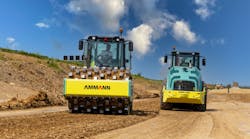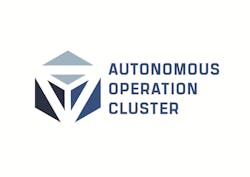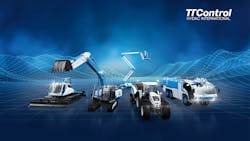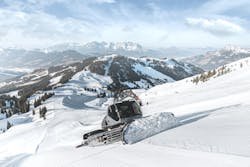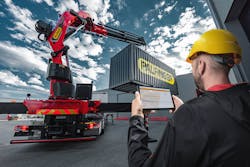New Autonomous Operation Cluster Advancing Autonomy in Off-Highway Equipment
A new technology collaboration known as the Autonomous Operation Cluster (AOC) is bringing together manufacturers from the off-highway mobile equipment industry to advance development of autonomous systems. It is comprised of five companies developing technology and machinery utilized in off-highway applications:
These companies plan to jointly develop the key technologies necessary to enable autonomous operation of heavy-duty mobile equipment functions. According to a joint press release from the companies announcing the partnership, the aim is to accelerate the development of advanced assistance functions through collaboration to ease operators’ jobs and increase productivity, efficiency and safety in a wide range of industries around the globe.
The AOC intends to develop the technology for various types of machines including road construction equipment, cranes, firefighting vehicles and snow groomers. As these are the products each OEM in the AOC currently develops, they will be able to bring their expertise in industry requirements and equipment capabilities to the project.
Use of computer vision and artificial intelligence (AI) will be key as these technologies enable precise detection of objects and processing of information for safe autonomous operation. In addition to helping machines "see" their environment to safely maneuver through it, these technologies can also be used to warn operators of dangerous situations. Corrective actions can then be taken by the operator or the autonomous solution built into the machine.
READ MORE: Perception Systems Guide the Path to a Fully Autonomous Tractor
To start, the AOC plans to define a technological solution for automating machine functions and develop a proof of concept as well as initial prototypes. Additional application implementation for specific use cases is likely to occur in 2023.
Why form the AOC?
According to the joint press release, the most important benefit to this new cross-industry collaboration is the reduction in development time that will be possible due to the companies sharing their knowledge in the areas of automation and heavy equipment design. Each of the participating companies will provide experts to be part of a dedicated developer community to address industry-specific technological challenges.
There are three main areas in which the AOC plans to focus its development efforts:
- robust hardware platforms,
- modular software components,
- customized application functions.
"Together, we will lay the foundation for the next generation of automation and autonomy capabilities in the mobile machinery and off-highway industries," says Roberto Ferrari, Senior Vice President Service & Operations at TTControl. "TTControl will support this groundbreaking endeavor with its advanced knowledge of electronic architectures and expertise in computer vision and artificial intelligence. With the synergies from this collaboration, we will develop essential building blocks for autonomous vehicles and mobile machinery that will significantly improve the productivity and safety of future off-highway solutions."
"This technology will bring incredible value to the roadbuilding process," says Tomas Kopic, Executive Vice President of Ammann’s Heavy Equipment Division. "There will be improvements in quality, and jobsites will be safer, too. The efficiency gains provided by the technology will improve sustainability – and the profitability of our customers."
"Developing together common technologies and sharing critical computer visioning and AI capabilities within an advanced development environment will allow PALFINGER and all Partners of the AOC to increase speed to market and leverage synergies in the development of smart lifting solutions," says Andreas Hille, Senior Vice President Product Line Management & Engineering at PALFINGER. "Following our PALFINGER strategy GO DIGITAL we are providing digital assistance and autonomous operating functions which maximize operational effectiveness, increase operational safety and generate additional value by seamlessly integrating our smart lifting solutions into the digital ecosystems of our customers."
"What’s great about this development is that it supports the operators in helping them make perfect finishes on the slopes," says Martin Kirchmair, Head of R&D at PRINOTH. "Staff turnover in a team of snow groomer operators leads to an imbalance in experience. With the assistance and autonomous functions that we’re working on in the cluster, less experienced operators will be able to prepare ski slopes and courses at the highest level. This saves time and money for ski resorts and helps manage snow sustainably."
"With the development of autonomous firefighting equipment, we improve the safety of emergency forces and meet their increased safety requirements," says Markus Schachner, Senior Vice President Product Development. "Additionally, we support our customers to handle different operation scenarios much more efficiently and precisely. As innovation leader of our industry, we want to share our knowledge and with this all collaboration partners will gain economy of scale required to develop Autonomous Functions."
Automation a Solution to Labor Challenges
Like many industries, those in applications utilizing off-highway equipment such as construction and agriculture are finding it difficult to find skilled labor. And this challenge is expected to persist in the coming years. Automation is seen as a means of helping overcome this industry struggle.
Automating certain functions of a machine can make it easier to use. Depending on the system, all an operator may have to do is push a button and the machine takes care of the rest. This can help to reduce training time for new operators as well as improve comfort as they no longer have to exert as much effort to perform tasks.
By automating work functions, there can also be better assurance they are done in a correct and consistent manner every time which helps to improve efficiency and productivity.
Improved safety is another key benefit to automation. Removing human error through use of automated systems ensures machines are operated correctly. And as industries move toward fully autonomous equipment, humans can be removed from the machine completely. Instead, they can be working at a remote location where they monitor the autonomous machines. This is particularly beneficial for equipment used in harsh or dangerous environments, such as mining.
Many industry experts also say implementation of automation could help attract younger generations to work in off-highway equipment industries as they want to work with new, cutting-edge technologies.
Overall, there are many benefits automation can provide to the off-highway equipment industry. While its implementation has already advanced over the past several years, collaborations like AOC will help to bring even more technology advancements to the industry.
